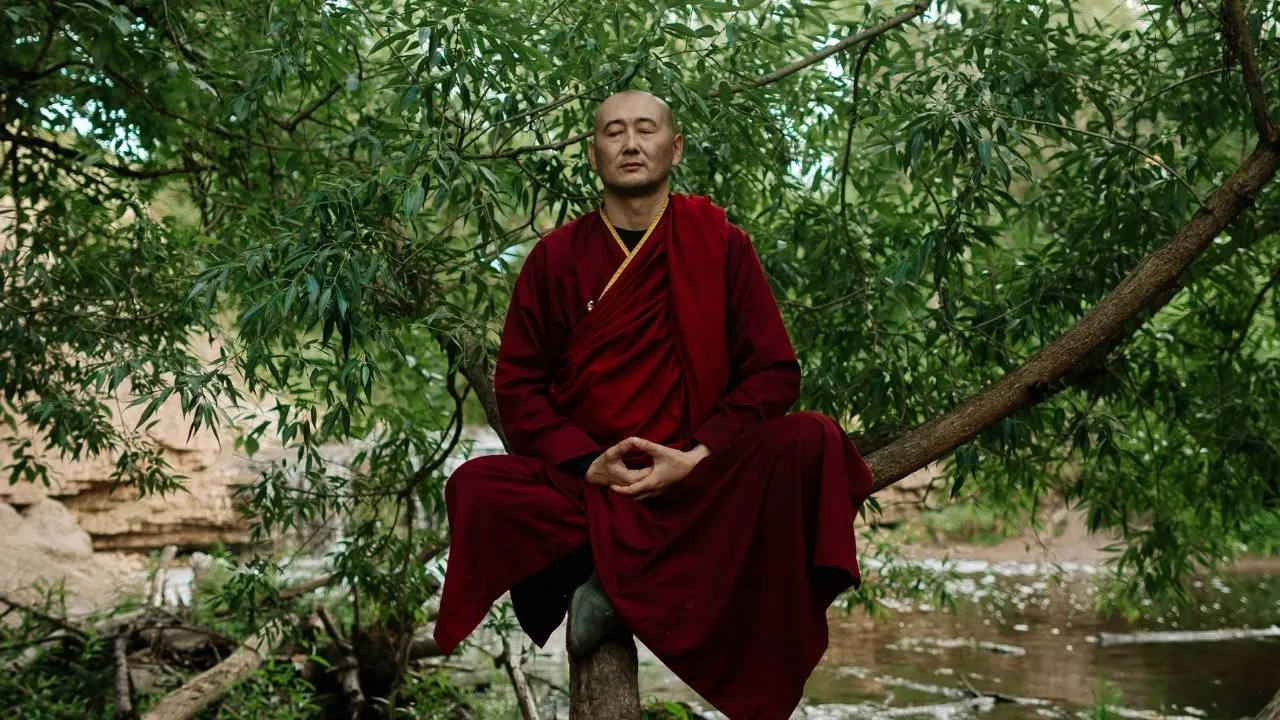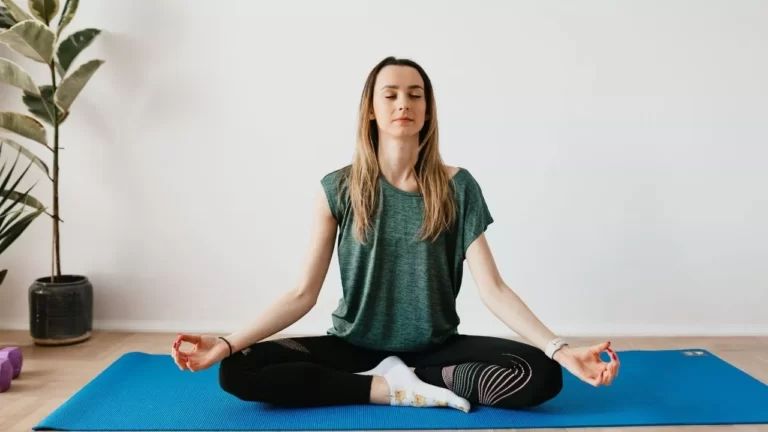What is Zen Meditation and Techniques in Buddhism?
Zen Meditation is a meditation technique that is the soul of Buddhist Psychology. It brings body, mind, and breath together as one reality. It brightens your nature.
What is Zen Meditation

Do you know the meaning of Zen?
Zen is a Japanese term that is derived from the Chinese word Ch’an, which means Meditation or concentration.
The word Zen (as an adjective) means relaxed and not worrying about things that you cannot change.
And as a noun, Zen is a form of Buddhism, originally developed in Japan that focuses on awareness through the practice of meditation.
This blog is designed to know about Zen Meditation, its benefits, techniques, etc.
Know about Zen Meditation
It was invented by 13th-century Zen master Dogen. He considered zazen not only the method of moving toward enlightenment but also to establish enlightenment within our self.
Zen is a way of seeing clearly who we are and what our life is, and a way of living based on that vision.
Zen has two common sections – gradual and sudden. They both are means to enlightenment but have different views. Zazen (means sitting meditation) is the only technique you found in the gradual school of zen.
The sudden school of zen, which beliefs in sudden enlightenment, has a prime focus on Koans. A Koan is a riddle, puzzle, story, dialogue or statement which is used by zen Buddhist during meditation to provoke enlightenment.
Zen Meditation Benefits
- It improves focus or attention: Under stress, you cannot concentrate on your thoughts. Zen meditation trains the brain to be mindful or present. In this mediation, you learn to pull back your thoughts and ignore the distractions.
- It restores the energy: Stress and distraction drain your energy from mind and body. In Zen meditation, deep breathing generates positive energy in the brain and the body.
- It builds insight and acceptance: In stress, you lose your patience and have no tolerance. Zen meditation teaches you to accept things and gently face them.
- It fosters a positive attitude: Stress or negative thoughts down your moral and it leads to depression. Zen mediation removes the negative thoughts from the brain and increases mindfulness.
- It is used as a treatment for drug abuse: Zen meditation acts on the nervous system and improves mood. And better mood helps drug-addicted people to resist the temptation to use again.
Common Types or Divisions of Zen Meditation:
Zen meditation is classified into five main divisions by the Fifth ancestor of the Chinese Huayan school, Kuei-Feng Tsung-mi, which are as below: –
Bompu zen: It is a non-religious, ordinary zen, useful for improvement in physical and mental health. Everybody can practice it and achieve the feeling of happiness and well-being.
Regular practice of it, will improve health, helps to achieve concentration and clarity of mind. Martial arts, Zen arts, Taoist practices are some practices considered as Bompu Zen.
Gedo Zen: means ‘Outside way’ zen. It is religious in its extent and methods. It might consist of prayer or devotional attention to some entity.
These practices involve ‘siddhis’ (powers), real or imagined, to get control over the brain and mind so that one can imagine oneself to be more “godlike”.
Shojo zen: Shojo means ‘Hinayana (small vehicle), which takes you from delusion to enlightenment. It is considered small because it is designed to accommodate only one’s self.
It is Buddhist, but not in accord with Buddha’s highest teachings which state that one cannot attain personal peace while remaining indifferent to the wellbeing of others. It is for the people who believe in the dual nature of reality and see themselves as separate from the world.
Daijo zen: Daijo means ‘Mahayana’ (Great vehicle). This is true Buddhist zen. The purpose of this is to awaken your true nature, but upon enlightenment, you realize that this is more than a means to Enlightenment – it is the realization of your true nature. Dogen- Zenji pointed out that the more deeply you experience this, the more you perceive the need for practice.
Saijojo Zen: It is the height of Buddhist zen practice and is referred to as ‘the easy and perfect’ stage because the focus is not on achieving anything. It is a crown of Buddhist Zen.
Proper practice of this zen gives you faith that you will reach enlightenment from dedicated practice.
Steps to practice Zen Meditation
Traditionally, Zen meditation is practiced in half or half-lotus position. But it is best practiced when you are in a comfortable posture. You can choose any one posture from Full Lotus, Half Lotus, Burmese (cross-legged and place in front of you), and Seiza (sit on bench or cushion).
- Sit in a comfortable posture.
- Hold your hands like one palm on the other. It should be like as same half-lotus style. This hand position is called the Cosmic Mudra in Japanese. Put your left hand on the right one. Prepare an oval by touching the tips of the thumbs together so that your thumbs touch each other and form a somewhat straight line. Ensure that the tips of your thumbs should lightly touch each other. Both wrists should be placed on your thighs the edge of your hands should rest against your belly.
- Some people close their eyes, some keep them open, some half-open in this mediation. We would like to prefer as eyes closed.
- At the start, focus on the breath. Start by breathing through your mouth with breaths until your breathing is smooth and steady, then breathe through your nose and keep your mouth closed.
- Begin to count the breaths from one to ten.
- Your mind will go in thoughts. Keep your focus on your breathing, not on your thoughts. Let your thoughts come and go, but don’t entertain them.
- Your brain will tell your mind to stop breathing or to do something else. Just keep your attention focused on the breath.
- Always practice this meditation for 5 to 10 minutes a day, then gradually increase day by day. Preferably time is early morning.
Try to meditate without distractions. This is very difficult initially and will get easier over a day and time. this mediation helps to teach your mind to get to know yourself better.
Read More:
Conclusion
Zen meditation includes a specific and clear practice way such as counting your breaths, focus your attention on thoughts, developing the power of concentration.
Zen meditation teaches you a fine difference between life and quality life.
FAQ:
Q. What should I wear while practicing zen meditation?
A. Wear loose clothing so that you can sit comfortably in cross-legged or any other posture for a long time.
Q. Which are the things you should avoid before practicing meditation?
A. 1. Avoid eating a heavy meal before you sit for meditation. It can inhibit abdominal breathing and also make you sleepy.
2. Avoid any perfume or aftershaves or the like because it can distract some people.
Q. Can people from any religions practice zen?
A. Yes. People with any religion can do and practice zen. There is no pressure on you to change your religion or spiritual beliefs.
Q. How do I get into the posture if I am not very flexible?
A. In the beginning, it may feel painful to sit in a lotus or half-lotus position. But this gets better with the practice. If you are aged or suffering from illness and unable to sit cross-legged on the floor, then you can use the chair.






